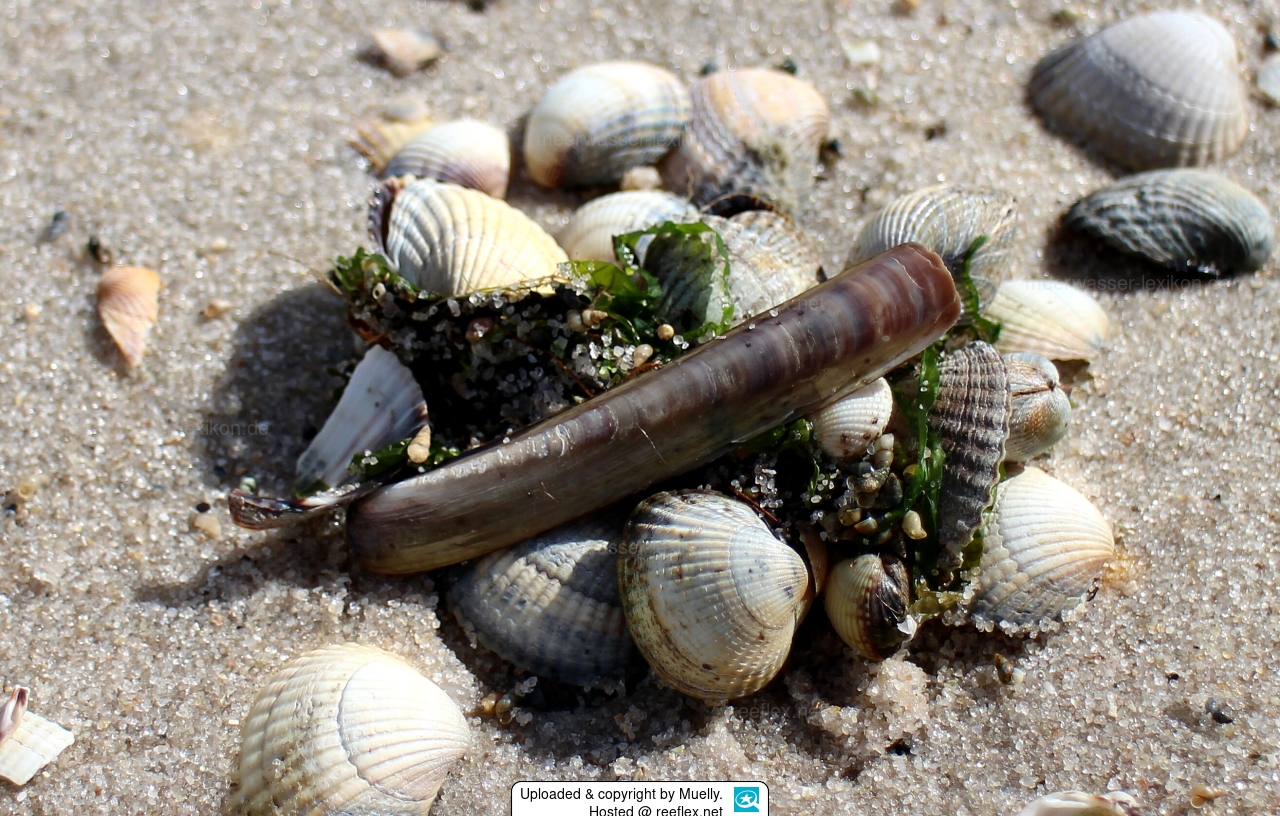Info
Conrad, 1843
E. directus is a marine shellfish which is indigenous on the Atlantic East coast of the North American Continent where it is found from Labrador to South Carolina. The species is exotic in European waters and has colonized the sandy shores of the east Atlantic and North Sea from Norway to France. Its distribution may still be extended by further expansion of its range. During the early years expansion was slow but this accelerated during the 1990s.
The species is found in its native range in the west Atlantic as well as in its colonized area in the east Atlantic in the lower belt of the tidal zone and the upper zone of the sublittoral zone where fine sand is present. E. directus is buried in fine sand but the adult shell is able to move by itself for short distances. The larvae have a pelagic life stage by which they are transported by tidal waves and currents. Possibly this is the reason of their rapid dispersal during colonization.
Mass mortalities occur regularly in the European distribution range. This may be due to low water temperature
Text source: Invasive Species Compendium
Synonyms:
Ensis americanus (Gould, 1870) (synonym)
Ensis arcuatus var. directus
Ensis directus (Conrad, 1844) sensu Abbott, 1954
Solen directus Conrad, 1843
Solen ensis var. americanus Gould & Binney, 1870
E. directus is a marine shellfish which is indigenous on the Atlantic East coast of the North American Continent where it is found from Labrador to South Carolina. The species is exotic in European waters and has colonized the sandy shores of the east Atlantic and North Sea from Norway to France. Its distribution may still be extended by further expansion of its range. During the early years expansion was slow but this accelerated during the 1990s.
The species is found in its native range in the west Atlantic as well as in its colonized area in the east Atlantic in the lower belt of the tidal zone and the upper zone of the sublittoral zone where fine sand is present. E. directus is buried in fine sand but the adult shell is able to move by itself for short distances. The larvae have a pelagic life stage by which they are transported by tidal waves and currents. Possibly this is the reason of their rapid dispersal during colonization.
Mass mortalities occur regularly in the European distribution range. This may be due to low water temperature
Text source: Invasive Species Compendium
Synonyms:
Ensis americanus (Gould, 1870) (synonym)
Ensis arcuatus var. directus
Ensis directus (Conrad, 1844) sensu Abbott, 1954
Solen directus Conrad, 1843
Solen ensis var. americanus Gould & Binney, 1870







 Muelly
Muelly





